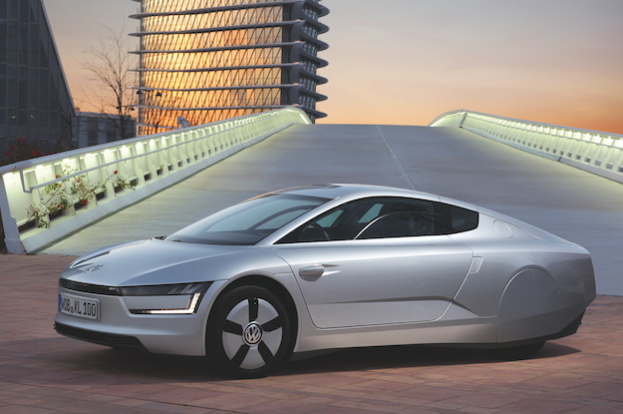
When in 2009 we first learned about the Volkswagen XL1 in early prototype form, we thought it was a bit of a myth. Then called the L1, we figured the 261-MPG concept vehicle was on par with the 100-MPG carburetor our grandfathers used to talk about, the one the government was reportedly withholding. When friends and colleagues would ask us about the hyper mileage Volkswagen they’d heard about, we would assure them they’d never see one outside a museum.
Now, however, we’re left eating crow because Volkswagen is really going to sell this unicorn of a car.
The extremely efficient XL1 is powered by a diesel plug-in hybrid system. The engine is a 1.0-liter two-cylinder turbocharged diesel engine that produces 47 horsepower. That tiny diesel is mated to a 27-horsepower electric motor, which is bolted to VW’s seven-speed DSG dual-clutch automatic transmission. The XL1 is capable of an emissions-free, electric only range of 32 miles from the initial electric charge. The result, as you already know, is a European combined fuel economy rating of 261 MPG.
Interestingly, at a constant 62 MPH cruising speed, the XL1 only requires 8.3 horsepower to propel itself forward. To hit that 62 MPH, the XL1 will need 12.3 seconds from a dead standstill. Although the XL1 is most efficient at 62, its stop speed isn’t far off at 99 MPH.
The XL1 doesn’t simply benefit from a highly efficient powertrain; it also has the most aerodynamic body of any production car ever with a drag co-efficient of only 0.19. Additionally, the XL1 is very, very light weighing only 1953 pounds thanks to its carbon fiber construction.
Unlike the previous L1 concept, the XL1 can seat two passengers in a slightly graduated seating arrangement – not too dissimilar from normal coupes.
Volkswagen has said the XL1 will go into limited production for select markets. A Volkswagen representative has informed us that the brand has no current plans to offer the XL1 in the States. In addition, VW has also not announced any pricing. When we learn more, we’ll be sure to update accordingly.


